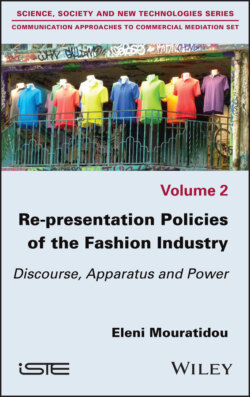Читать книгу Re-presentation Policies of the Fashion Industry - Eleni Mouratidou - Страница 7
I.1. Merchant discourse transformations
ОглавлениеThese practices are representative of a movement that generally determines the merchant discourse transformations, which are transformations that respond to hybridization processes, independently of their products or services and their segments. Behind-the-scenes staging and the “making of” are not exclusively practiced by the fashion industry (Mouratidou 2012, pp. 125–134; Mouratidou 2015, pp. 91–105), neither collaborations between artists and market authorities or the attempt to make a brand or product sacred through marketing policies and communication strategies. Many researchers have questioned these market issues. For example, Bouquillion et al. (2013) demonstrate how “the values and habitus of the art world [take over] the activities of designing and conducting industrial projects” (p. 11, author’s translation), Marti (2012b, pp. 199–210) examines the transformation of brands into museums through the study of the patrimonialization of the Haribo food brand, while Dondero (2009) analyzes from a semiotic point of view the sacred in the photographic image. The scientific literature in the information and communication sciences (ICS), semiotics or sociology provides many different but semantically convergent notions that allow us to understand these hybridization and transformation processes: culturization (Bouquillion et al. 2013), culturalization (Marti 2014, pp. 57–66), artification (Heinich and Shapiro 2012), artistication (Rastier 2013) and artialization (Lipovetsky and Serroy 2013). These notions testify to the transformation processes affecting the products or the processes of their communicational staging. They make it possible to grasp market pretensions and their legitimization processes (Boltanski and Chiapello 1999). As the examples cited above, which come from the fashion industry’s communication strategies, they can be approached as a process of culturalization or artification. What is of great interest in these examples, however, is not only the transformation processes taking place that affect fashion, but also the spectacular density that accompanies these processes as well as their globalizing dimension. From this perspective, a twofold research problem emerges. It concerns both the meaning of the commercial spectacle as produced by the fashion industry and the political aim included in this globalizing program that integrates different common areas such as the political, artistic, cultural, sacred and religious. The commercial spectacle thus allows this industry to increase its economic and symbolic power.
